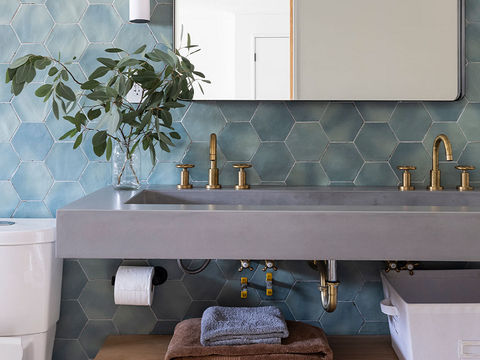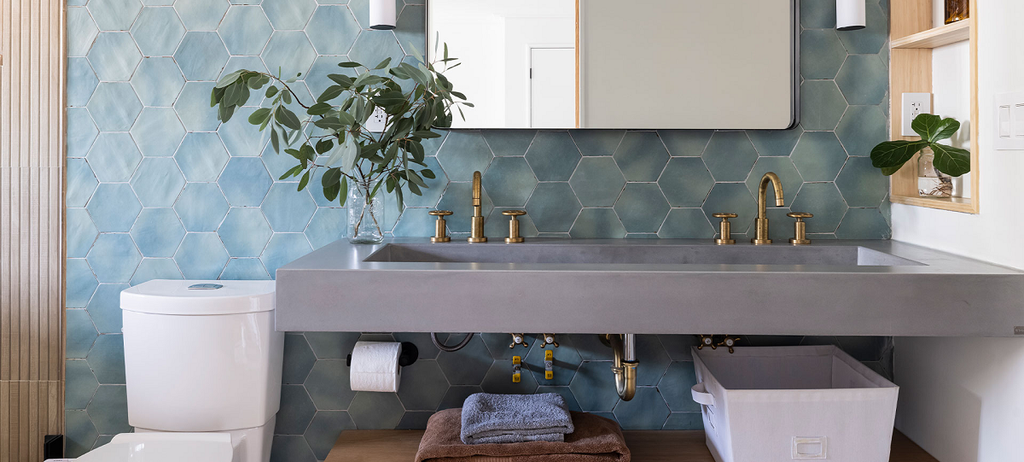
The Inside Story: Concrete Interior Design

Concrete has long been all about exteriors. Sidewalks, commercial exteriors, patios, and park benches in concrete are all great, but concrete has been inching its way indoors over the past decade.
Better casting methods, high-tech mixes, and new designs have made concrete one of the most adaptable materials for both construction and design—the perfect material for interior design.
Take a look at all the ways concrete has made its way into interior design.

Countertops
The natural color, patina, and variations that come with stone, also come with concrete countertops. However, concrete opens up a whole world of design possibilities.
Concrete can be pigmented to nearly any color. Trueform can match concrete to any Pantone or Benjamin Moore paint color. Concrete can also be poured to your kitchen’s exact specifications for a perfect fit. Another perk of concrete is that it can have fewer seams since it is poured to suit your kitchen.
Floors & Walls
You’re probably used to seeing concrete walls and floors only in commercial environments. But with the ability to achieve different colors and textures coupled with lighter weight mixes, interior designers are bringing concrete to the walls and floors of the residence as well.
Gone are the days when concrete has to feel rough and look cold. It can create a stunning surface that’s silky smooth and far more durable than a painted wall. Floors in concrete are on trend and are great options for remodels (where they can sometimes be poured right over existing floors).

Sinks
The concrete sink is an excellent alternative for the kitchen and bathroom. Concrete sinks for the bathroom often come in one piece that covers the whole vanity top. Go with an apron style (front and sides have tall vertical sides) that makes the surface look thick—a style that’s trending.
Concrete sinks can be custom cast in a variety of shapes and sizes. Elite interior designers sometimes order unusual sinks that are works of art. This one-of-a-kind canyon sink is an example of the adaptability of concrete.
Fireplace Surrounds
Fireplaces are another place where concrete is cropping up more and more frequently. It’s a great opportunity to try out a unique texture in an area that can support some design drama. Concrete is ideal for creating large-scale fireplace surrounds that extend all the way to the ceiling or across the entire wall.
Smaller, more traditional fireplace surrounds in concrete provide a stone type look and feel if you want an alternative to a more traditional design. Concrete also makes a nice option for a hearth or mantle.
Dining & Coffee Tables
A concrete dining table is the pinnacle of fresh design. A thin top with metal structure underneath is ideal for styles ranging from industrial to MidMod. Or opt for a table with an apron edge, which will make the table look much thicker. One with concrete legs or a pedestal makes for a solid, almost monumental feel.
Coffee tables in concrete are a piece that your guests won’t soon forget. They can have a seamless waterfall look, industrial metal legs, or even wheels. Another popular style is the 3-dimensional solid. A cylindrical concrete side table, round or oval coffee table, or a box style all become the centerpiece of a living room design.
Concrete is for more than just the patio. Open the door and let concrete interior design show you how to transform your spaces with dramatic pieces.
Want to know what else concrete can do?